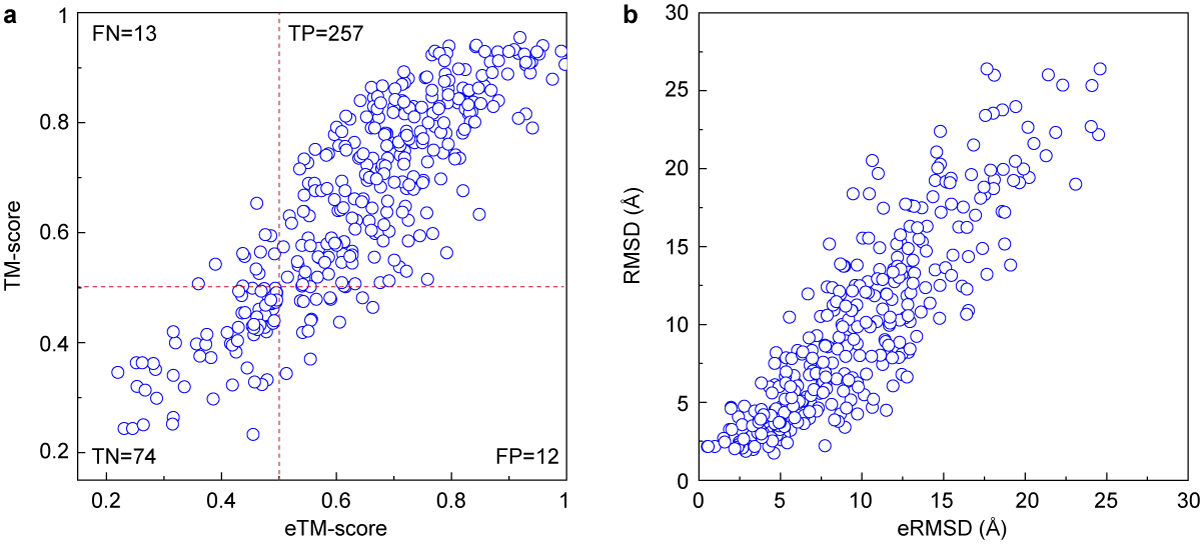In a benchmark test set of 356 non-homologous multidoamin proteins, we found that eTM-score and eRMSD are highly correlated with the actual TM-score and RMSD. Correlation coefficient of eTM-score of the predicted model with actual TM-score to the native structure is 0.85, while the coefficient of eRMSD with actual RMSD to the native structure is 0.82. Values reported in Column 2 & 3 are the values of eTM-score and eRMSD, respectively.

(a)The relationship between the actual TM-score and the eTM-Score of the first model generated by I-TASSER-MTD.
(b)The relationship between the actual RMSD and the eRMSD of the first model generated by I-TASSER-MTD.
What is TM-score?
TM-score is a scale for measuring the structural similarity between two structures (see Zhang and Skolnick, Scoring function for automated assessment of protein structure template quality, Proteins, 2004 57: 702-710). The purpose of proposing TM-score is to solve the problem of RMSD which is sensitive to the local error. Because RMSD is an average distance of all residue pairs in two structures, a local error (e.g. a misorientation of the tail) will araise a big RMSD value although the global topology is correct. In TM-score, however, the small distance is weighted stronger than the big distance which makes the score insensitive to the local modeling error. A TM-score >0.5 indicates a model of correct topology and a TM-score <0.17 means a random similarity. These cutoff does not depends on the protein length.
You are requested to cite following articles when you use the I-TASSER-MTD server:
1) Xiaogen Zhou, Wei Zheng, Yang Li, Robin Pearce, Chengxin Zhang, Eric W. Bell, Guijun Zhang, and Yang Zhang. I-TASSER-MTD: A deep-learning based platform for multi-domain protein structure and function prediction, to be submitted.
2) Xiaogen Zhou, Jun Hu, Chengxin Zhang, Guijun Zhang, and Yang Zhang. Assembling multidomain protein structures through analogous global structural alignments. Proceedings of the National Academy of Sciences, 116: 15930-15938 (2019).
3) Ambrish Roy, Alper Kucukural, Yang Zhang. I-TASSER: a unified platform for automated protein structure and function prediction. Nature Protocols, vol 5, 725-738 (2010).